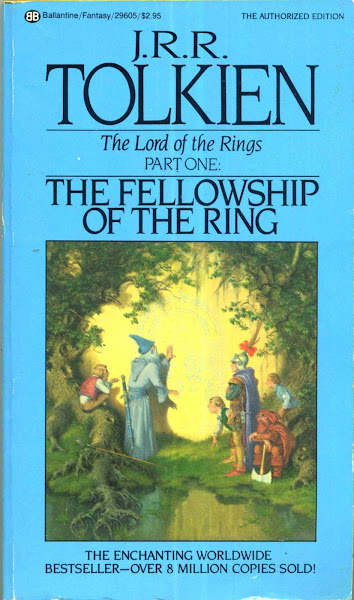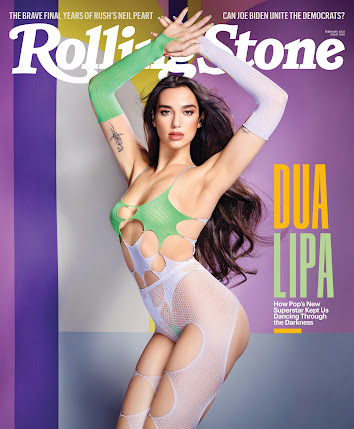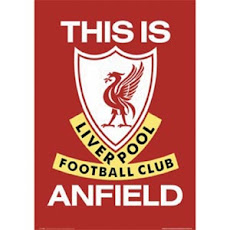Pacman Country
by rick olivares
by rick olivares
Manny Pacquiao owns the Philippines. Okay, he doesn’t but he certainly has the country in the palm of his hand.
If you traverse the length of Epifanio De Los Santos Avenue, Metro Manila’s main thoroughfare, you’d think there’s an election going on. There are no less than six huge billboards of that now famous mustachioed mug eating fried chicken, crooning on a microphone, promoting a famous beer brand, available for downloading on your mobile phone as wallpaper, and being congratulated for dispatching his latest Mexican foil. Outside the sprawling Camp Aguinaldo, the headquarters of the Philippine Army based in Quezon City, the largest city in Metro Manila, there’s a billboard of a Philippine soldier in a snappy salute pose. “Para sa ‘yo ang buhay ko,” (“I will lay down my life for you.”) the slogan reassures of the military’s commitment to the defense of the Filipino and his way of life; a direct lift from Pacquiao’s chart-topping single that was on the airwaves more than the Pussycat Dolls, the current pop sensations of whose beauteous lead singer is of Filipino descent.
In a country that worships its silver screen idols, Manny is the star people from all walks of life pay to watch. This young and skinny kid born to extreme poverty now has the country’s top conglomerates at his beck and call. As of this writing, Manny endorses 10 different products. Industry insiders say that any talk about endorsements begins at a minimum of PhP 10 million pesos or US$200 thousand. San Miguel Corporation, one of Asia’s biggest food and beverage conglomerates reportedly snared Pacquiao for an undisclosed amount of millions (the word is it amounts to PhP 20 million pesos or US$400 thousand -- a whole lot more than was offered the late Fernando Poe, Jr, the King of Philippine Movies). McDonald’s likewise snared the Pacman to another megabucks long-term deal. Said an executive of the fast food giant who refused to be identified, “We choose Manny because he’s an “icon” in the country. He is that Filipino everyman who has defied the odds and won.” In fact, McDonald’s campaign has since come out a winner; sales have jumped up tremendously and have made significant inroads in the shares of industry leader and business rival Jollibee Foods Corporation.
The Philippines’ has always excelled in the international sporting arena. In billiards, perhaps no country has as many successful and popular cue magicians as the Philippines. It has Efren Reyes, Django Bustamante, Amang Parica, and Alex Pagulayan to name but a few. In bowling, it has Paeng Nepomuceno and CJ Suarez. In chess, it has Grandmasters Eugene Torre, Rosendo Balinas, Jr. and the young turk currently making waves, Mark Paragua. In basketball, the Philippines’ most popular sport, the country has embarked on an ambitious campaign to regain lost glory (back when it was a world power from the 1950’s to ‘70’s) with a team powered by Filipinos of mixed nationalities.
As much as basketball is considered as the national pastime, no sport unties the country like boxing. It is the one true sport that literally stops the traffic and leaves its crowded urban jungles a ghost town when one of its boxers has a match. The second Erik Morales-Manny Pacquiao fight dubbed “the Battle II,” was the single biggest moment in the history of Philippine sports. Bigger than all the local basketball rivalries and the Thrilla In Manila back in October of 1975 when Muhammad Ali knocked out Joe Frazier in one of the greatest boxing matches in history. The Battle II broke all local television viewing records with 58.2 rating (that tallied up to 2 million households) for a 77.8 share of the market and a 30.6 rating and 8.4 market share on cable TV. Thirty-two cinemas in malls over the country carried the live feed and played to packed audiences. Business establishments, hotels, bars and restaurants were likewise tuned in to the fight. And when the final bell rang and ringside announcer Michael Buffer announced Pacquiao as the winner, the celebration spilled into the streets in a frenzy unseen before. Hundreds of thousands of people lined the streets for Pacquiao’s victorious homecoming parade. Politicians surrounded him at all times aware of the valuable photo opportunities of standing side-by-side with the People’s Champion. Every form of mass media in the country featured his victory over Morales. Every single morsel of information about Manny whether rumors of an illicit affair, his penchant for karaoke bars, or his reputation as a Mexican Legend Killer (with wins over icons Erik Morales and Marco Antonio Barrera and a superb knockdown of Juan Manuel Marquez that ended in a controversial draw) was news. And the national partying that followed lasted for more than a week.
No Filipino boxer or athlete has bridged international borders the way Pacquiao has (as much as Gabriel “Flash” Elorde was an international champion, he didn’t live in the age of information technology). In fact, if you were to google Pacquiao, you’ll find more than half-a-million entries or results to his name.
Manny Pacquiao is the Philippines’ version Rocky Balboa. Only his is a story more striking and real than anything fictional; a real rags to riches story that has made him the first Filipino to truly be a cross-cultural phenomenon.
The story of this 130-pound man who carries the weight and expectations of 82 million people is best defined in three places: the streets of General Santos City, an overcrowded boat to Manila, and a dingy old gym.
Street Fighter
General Santos City in the southern Philippines has been re-named Manny Pacquiao City. Okay. It hasn’t been re-named and it still is known as General Santos City. Prior to being known around the world as the hometown of Manny Pacquiao, the claim to fame of this beautiful coastal town is being the Tuna Capital of the country and the hometown too of the Bad Boy from Dadiangas – as Gen. Santos was formerly known – Rolando Navarette himself a former world boxing champion.
It was in these city streets where Manny’s firm resolve to rise above his misery took form.
Miserable in fact was an understatement. Manny wasn’t even born yet when the odds were already stacked against him. His mother Dionisia and her two children were left by her first husband for another woman. A few years later, she remarried this time to Rosalio Pacquiao to whom she would have four more children with (of which Manny was the second). They were lucky to eat two meals a day which usually consisted of a native rice meal called “lugaw.” Despite being bright at school there simply wasn’t enough money to see Manny and the rest of the kids to secondary school. Manny almost didn’t march during his graduation from elementary school because they couldn’t afford to buy a graduation uniform. In order to make ends meet, Dionisia and her children had to sell bread, rice cakes, cellophane, peanuts, and doughnuts. Manny, barely into his teens worked too as a waiter to augment their meager earnings.
It was at the age of 13 when Manny discovered boxing. “There wasn’t much to do during our spare time,” recounted Manny. “But the one popular activity in our neighborhood was boxing.” There wasn’t enough money to go around purchasing proper gloves or shoes, so the combatants would wrap towels around their fists and fight barefoot.
“Manny was a natural,” said childhood friend and longtime trainer Buboy Fernandez. “He took to the sport like a duck to water. Even then he had that mean left hand. He would even beat boys who were older than him. I don’t recall him ever losing a fight back then.”
“At first, I wondered why Manny would get up from bed real early,” recounted Dionisia of those early morning jogging sessions. “He became secretive because he knew that I would disapprove.” Dionisia didn’t think her son’s fascination to the sport would amount to anything so she thought that the time was better off spent trying to earn a living.
But it was too late. As much as Dionisia tried to dissuade him from becoming a boxer, the young man who had known hardship all his life knew that his best chance out of the mean streets of nowheresville was through boxing.
Like a Moth to a Flame
Manny Pacquiao took one last look at his beloved General Santos City that was quickly disappearing in the horizon then turned the opposite way. His heart and mind were awash in a sea of tortured emotions.
Not too long ago, his mother found out that his father who was working in a farm in another village now had another family. The whole family was devastated; more so with his mother who was now struck twice by a lightning of the unluckiest kind. Now at 16 years old, Manny felt all the more convinced that if he were to get ahead in the world, his fortunes lay in that glittering city of hopes and dreams for millions of Filipinos… Manila.
For many of the 83 million Filipinos, Manila is like New York. It is where dreams are fulfilled and to paraphrase Frank Sinatra, and if you make it there, you can just about go anywhere else in the world. Not only is it the country’s capital but it is also the hub of business and politics, culture and the arts, and athletics and the sciences. The grandeur and allure of Manila ensures a steady pilgrimage of the hopeful and the hopeless from the provinces.
“I told myself that going to Manila was not only going to help further my boxing career,” explained Pacquiao who bristled at the painful memory of those formative years. While talking about past is generally taboo, Pacquiao keeps it close to his heart for it is what fuels his desire to achieve and succeed. “But it was also going to help me cope better with the pain of my parents’ separation.”
The moment he stepped on board that crowded passenger ship as a stowaway with nary a peso in his pockets he knew that there was no going back. Manny knew that it was the only way if he wanted to make good on his dreams.
“The boat was crowded,” remembered Pacquiao. “But you could see in everyone’s faces that the great adventure was about to begin. It was exciting and at the same time… frightening.”
Million Dollar Baby
Freddie Roach’s Wild Card Boxing Club on the 2nd floor of a two-story building in Vine Street at the corner of Santa Monica Boulevard in Los Angeles is just one of Tinseltown’s many attractions. When one of Roach’s fighters is in session, tourists, well-wishers, and media-types pack the small gym that after a while with all the sweating bodies it’s hard to tell the boxer from the visitor. It is here where Pacquiao now trains under the close supervision of Roach, a one-time featherweight boxer himself. Those who know Manny will say that Pacquiao is like a wild stallion that isn’t easily cowed by anyone; he worships Roach for his intelligence and for molding him into a polished and feared fighter.
In stark contrast, the Lainez-Mondejar (L&M) Gym in Sampaloc, Manila is that stereotypical dive of a boxing gym unlike the new jack clubs where the sport has become a means to workout. The dingy gym located in the heart of Manila’s squalor has that rank smell of leather, sweat, piss, and stuffy air to it that it’s hard to believe that it has nurtured some of the best fighters to come out of the country. It is here where Manny Pacquiao took his first steps in his journey to glory. “I want to become a boxer,” he meekly told the man behind the desk. Rod Nazario who was operating that gym then and would later manage Pacquiao thought that the skinny kid with a provincial accent was a joke. “Does your mother know you’re here? Go home,” said Nazario who can only chuckle at his gruff dismissal and chance first encounter with the lad who would one day be the face and future of Philippine boxing. “But who knew what was to come, eh?”
Although he left the gym, Pacquiao was unwavering in his desire to become a boxer. He found a job as a construction worker for Polding Correa who aside from being a building contractor ran his own stable of young and up-and-coming boxers. Just as it was back home in General Santos City, Pacquiao had to hold two jobs with his other income from selling cigarettes in the streets. The big difference this time around was that he knew he was close to fulfilling his dream. He did make it back to L&M Gym where he trained on his way to a sterling amateur record of 60-4.
In January 22, 1995, Manny returned to the south for his first professional fight. He outpointed Edmund Ignacio in a four-round match for his first win. He would string up nine more wins before falling to Rustico Torrecampo in a fight that he came ill-prepared for. The loss was jarring but it served notice that the chips weren’t going to fall for him all the time – he had to work hard for it.
And he did.
The World on a String
Manny Pacquiao has compiled a sterling 42-3-2 record with 33 knockouts on his way to six world titles. He has come back to silence his critics by destroying some plenty tough Mexican boxing legends. While working in New York City, when my Mexican and Puerto Rican neighbors and officemates would find out my ethnicity, the first thing they’d say was “Manny Pacquiao!” accompanied by a thumbs up gesture. His bell-to-bell all-out action style has captivated audiences everywhere. The stale and plodding heavyweight division has given way to the lightweights where the action has been fast and furious. Nowadays, he’s mentioned as one of the best pound-for-pound fighters in the world.
He’s lived months away from home and family in his quest for world titles and redemption. But for all his success and high living, Manny Pacquiao at 27 years of age still remembers his roots.
He still lives in General Santos although not in a ramshackle home. His palatial estate is like a tourist attraction periodically drawing people from all over whether he’s home or not. He has a foundation that sends poor children to school. He’s been a godsend to friends and family with his generosity. During his birthday, he throws a party where practically all the townsfolk show up. Not only are they in for a free treat but they get to be entertained by Pacquiao himself who’ll strap on a guitar and sing or wail away to a karaoke which is something he enjoys tremendously.
His success has single-handedly lifted the state of Philippine boxing to another level as well as the self-esteem of Filipinos all over the world. More and more Philippine fighters are being introduced in the world stage. Tony Aldeguer’s famed ALA Gym in Cebu recently signed a contract with Oscar De La Hoya’s Golden Boy Productions to showcase the talents of fighters like Rey “Boom Boom” Bautista, Z Gorres, and Jimrex Jaca. All have given props to Manny whose mere presence has caused the spotlight to shine their way.
In a recent interview after outpointing another Mexican in Oscar Larios in a fight that surprisingly went the distance, Pacquiao declared his intention to retire in two years’ time. But before any serious talk of post-career plans, he fights one last time this year against Erik Morales this coming November 18 in what is the final chapter of this epic trilogy. After their first encounter, Morales dismissed any talks of a rematch as he claimed that Pacquiao was nowhere near his caliber. But the fight got underway and the great Mexican was knocked out for the first time in his hall-of-fame career. With all the pre-fight trash talk (Pacquiao says he’ll knock Morales into retirement while Morales claims he’ll force feed his erstwhile conqueror a fistful of leather down his throat). This early, the Philippines (as is Mexico) is girding for the mother of all battles.
His family is set for life. If anything, his last two years in boxing are just to cement his place in history of the sport although his last ring exploits could have a huge bearing on that. New athletic sensations with similar rags-to-riches stories are said to be the Manny Pacquiao of their sport. His face has launched dozens of advertising campaigns. At the peak of his career, his life has been adapted into film and his everyday life is tabloid fodder. There’s even talk of him running for the Vice Mayor of Manila (of which he will surely win in this country starved for heroes and star power).
Even when he retires it seems that great adventure he looked forward to in what seems a lifetime ago is just starting.
After all, he’s got the country in the palm of his hand.









No comments:
Post a Comment